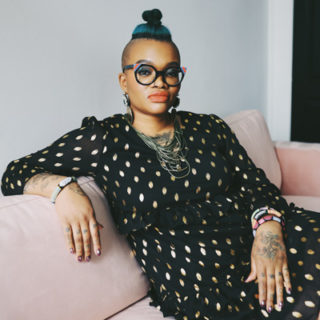Inspiration meets innovation at Brandweek, the ultimate marketing experience. Join industry luminaries, rising talent and strategic experts in Phoenix, Arizona this September 23–26 to assess challenges, develop solutions and create new pathways for growth. Register early to save.
When the candy company Mars Inc. announced it was giving Green M&M a makeover, it ignited a strong response from female leaders around the world. For some, it stripped the idea that females can embrace both power and sexuality in a 21st century way. Others applauded Mars for demonstrating that women can be just as fierce in sneakers as they are in high-heeled boots.
Hear the candid takes from leading female ad executives on the brand change.
A good start, but ‘Green is Green’
“I love that the M&M’s brand is starting to think about inclusion and that they’re making small changes to their characters for this reason. But I would have rather had them introduce a new character to reflect those efforts instead of toning Green down.
Green is Green, she is who she is. If she wants to wear sneakers because she feels just as powerful wearing them as she would wearing heels, that’s an even stronger and better message. It shows that you don’t have to dress a certain way to portray your personality.
For Green, it’s less about the way she dresses and more about her distinct personality. I don’t think replacing her heels with sneakers will convey that.
We all know representation matters, so brands can play a role by representing their characters correctly instead of being so prescriptive in the way they approach diversity and inclusion. Overall, I hope more brands start looking at DEI more seriously, and not do things for fear of cancel-culture, but rather are courageous enough to consider the changes they can make that will truly make an impact and on a regular basis.” Carmen Rodriguez, chief client officer and global partner, GUT
A reflection of more modern times
“Green M&M is one sexy piece of chocolate. She was created in the image of stereotypic femininity back in 2008—and even then, we executive women sighed that deep-breathed sigh that comes from a place of ‘we are trying to get to the C-suite, dammit … ’
Greens held an urban myth as aphrodisiacs, so presenting her as a high-heeled, eyelash-batting girl felt like a nod to times past even then. Much as I like to believe feminine trappings don’t trap us in our careers, they still do. We fight it all the time.
And even more, we’re in a time of evolving relationships with sexual assignment. Is someone in heels and lashes automatically female? So the reimagining of Green is very timely and frankly, a relief.
Many more of us can now identify with and enjoy Green’s character. And she/he/they is still one sexy piece of chocolate.” Michelle Edelman, CEO, PETERMAYER
A poor example of monolithic marketing
“The new M&M characterizations show diversity in looks associated with women, but it is important to recognize shoes/heels don’t make a woman. Traditional notions of performed femininity don’t resonate with all women and acknowledging that is key in reaching a more diverse consumer base. That kind of representation moves the culture and the market forward.
On another note, are people really upset because the ‘Brown’ M&M is still in heels? Of the variety, the Brown M&M is an actual depiction of a skin tone/hue; does it somehow suggest that ‘people/women/fems’ of color are more sexualized?
The new look gives her appeal and relatability to a whole new demographic; but, wait, we are talking about candy, right?” Davita Galloway, co-founder, HUE HOUSE
Whether you agree or disagree with Green’s new look, it proves one thing: brands have an enormous impact on the greatest societal issues we face today, from gender to leadership. Marketers should embrace that responsibility with the reverence it deserves and remember that every move—big or small—can have a tidal wave effect on our culture.













